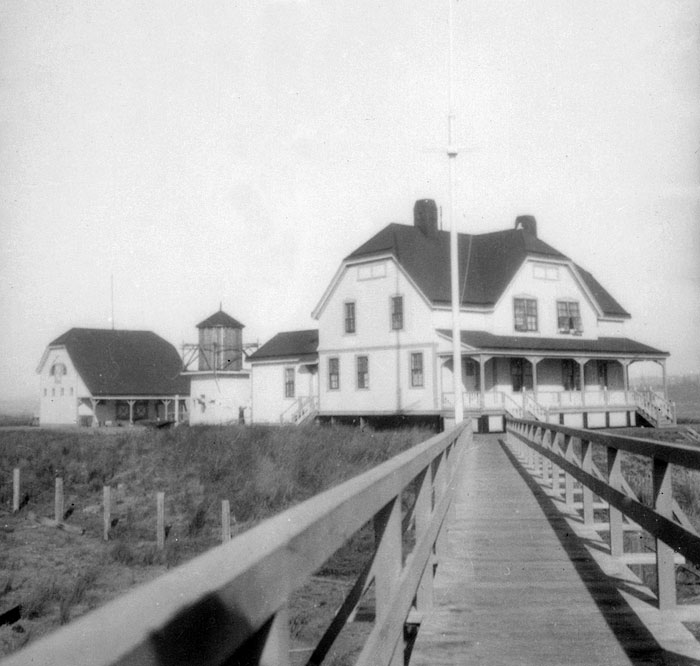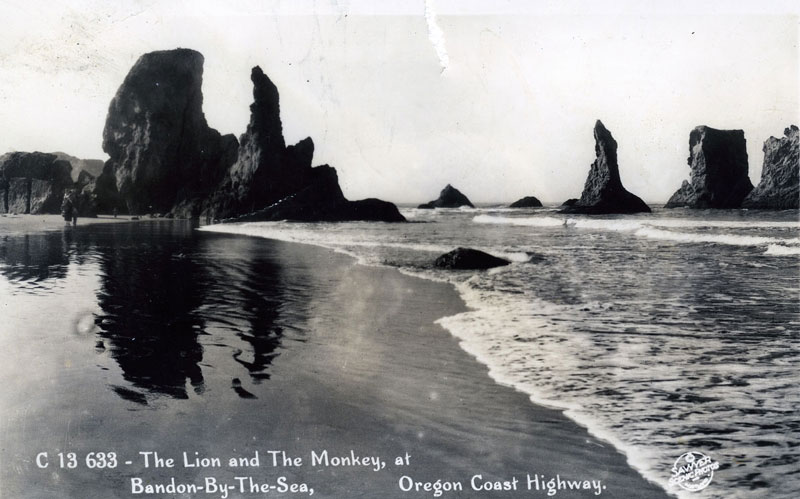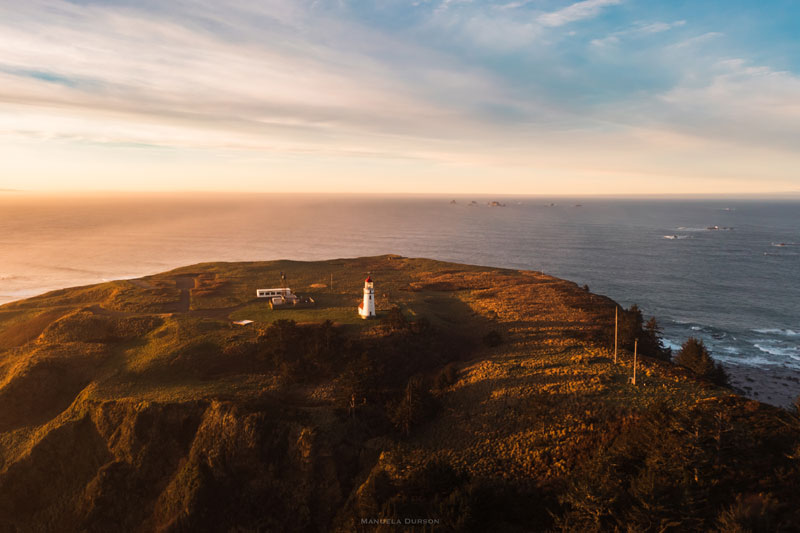1919 Wreck of J.A. Chanslor on South Oregon Coast Left 36 Dead Near Cape Blanco
Published 06/14/22 at 4:05 AM PST
By Oregon Coast Beach Connection staff
Includes exclusive listings; some specials in winter
In Cannon Beach:
Includes rentals not listed anywhere else
In Manzanita, Wheeler, Rockaway Beach:
Some specials for winter
In Pacific City, Oceanside:
Some specials for winter
In Lincoln City:
Some specials for winter
In Depoe Bay, Gleneden Beach:
Some specials for winter
In Newport:
Look for some specials
In Waldport
Some specials for winter
In Yachats, Florence
Some specials for winter
Southern Oregon Coast Hotels / Lodgings
Reedsport to Brookings, places to stay; winter deals
(Port Orford, Oregon) – The sailing had been good so far along the Oregon coast and southward towards California, and even as conditions were shifting on the morning of December 18, 1919, the trip to San Francisco that the oil tanker J.A. Chanslor was making still seemed to be smooth around noon. Somewhere just after that, as a thick fog laid in, some unusually harsh currents took over and threw the nearly 5-ton vessel off course. (Above: Cape Blanco, courtesy Manuela Durson - see Manuela Durson Fine Arts for more. No photos of the shipwreck here seem to be available)
This set in motion a string of events that wound up one of the deadliest shipwreck tragedies the Oregon coast had ever seen. In the snap of a moment, the Chanslor hit a rocky area just off the Port Orford-area's Cape Blanco, resulting in nearly 30 men dying almost instantly and ten more braving harsh and gnarly seas, with just a few of them surviving.
The wreck of the J.A. Chanslor, a tanker belonging to a Coos Bay company in 1919, still resonates through the last 100 years with a harrowing tale that takes place from Cape Blanco to Bandon.
That harsh fog and those disruptive currents caught even the Chanslor's captain by surprise, a man named A.A. Sawyer. All anyone knows is somehow they hit a reef of jagged rocks about 400 feet from shore, and only a mile or so from Cape Blanco and its lighthouse. Foggy conditions were so bad neither crewman aboard or lighthouse personnel could see each other. The lighthouse wouldn't have a clue until well after dark the next day. Yet it was the lighthouse in Bandon that actually had to respond.

Lighthouse at Bandon in the early century: it's here where rescuers came from to find the remaining crew
According to Earl Dooley, one of the survivors, the minute the distress whistle sounded he ran to the forward deck. In less than five minutes the vessel broke in two, with the rear half going under the water quickly.
“The 10 of us who were on the forward deck launched a boat as quickly as possible,” he said, in a story by The Oregon Daily Journal just days later. “When the first distress signal was sounded an attempt was made to send a wireless, but it was not successful and there was not time.”
Meanwhile the men who made it onto the lifeboat drifted about the wild Oregon coast ocean all night.
“The next morning we picked up two more of the crew, who were clinging to the gang plank which they had gotten hold of in the water. They were exhausted and one of them died later. “
He said it wasn't probable any of the men onboard the Chanslor could've made it to lifeboats. Later, it was known a good chunk of the crew went down with that stern section. Many were trapped in the boiler room.

Historic shot of Bandon courtesy Bandon History Museum
“The night was bitterly cold and the sea was rough,” Dooley said. “Several times we thought that the boat could not weather the storm and would be swamped. All suffered terribly. All day Friday we were driven by the wind through a cold rain. We had some sea biscuits to eat, but no water.”
They didn't know it then but they had drifted some 30 miles north to a spot just north of Bandon.
After sighting shore, they could see the breakers were rough and highly dangerous. Yet this was their one shot at safety, so they took it. The first of the breakers slammed the lifeboat hard and turned it over, throwing all into the water. Dooley swam for a time and managed to latch back onto the boat, which William Merkel and Captain Sawyer had also managed to do.
The three watched as as the head steward tragically drowned trying to make it onshore. Meanwhile, in what must have been a devastating moment, they saw no one else. All others had drowned in the manic south Oregon coast surf.
Dooley – and authorities – figured that the others were already so exhausted they couldn't muster the strength to fight those mammoth breakers.
Dooley and the other two were the only ones to make it ashore.
The trio spent hours on the Bandon-area beach, finally discovered about 5 p.m. or so. Sawyer was hospitalized in Bandon for quite awhile, not able to tell his story until much later due to his severe exposure to the elements.
For about a week after, US Coast Guard personnel and others combed the beaches and nearby seas for any signs of other bodies. Very few were ever recovered. In all, 36 of the 39 people onboard the Chanslor were killed, the majority of their bodies never seen again.
After a few days, the forward section with the bridge disappeared beneath the surf. Some other parts were seen for a bit until they too disappeared.
Oregon Coast Hotels in this area - South Coast Hotels - Where to eat - Maps - Virtual Tours
Cannon Beach Lodging
Nehalem Bay Lodgings
Manzanita Hotels, Lodging
Three Capes Lodging
Pacific City Hotels, Lodging
Lincoln City Lodging
Depoe Bay Lodging
Newport Lodging
Waldport Lodging
Yachats Lodging
Oregon Coast Vacation Rentals
Oregon Coast Lodging Specials
More About Oregon Coast hotels, lodging.....
More About Oregon Coast Restaurants, Dining.....
LATEST Related Oregon Coast Articles
November 7 through 9, three days of Celtic, even Prog. Yachats events
Holiday Rager on South Oregon Coast All About Mountain Biking
Wild Coast Trails Holiday Ride Saturday, November 22 in Agness near Gold Beach. South coast events
Infamous 'Bump' Somewhat Back on N. Oregon Coast Highway
Not quite as bad as last year and recently improved. Traffic, weather
Atmospheric River Across Oregon, Washington - Chances of Flooding Seattle to ...
Flood watch for much of PNW, rain through Fri. Aurora Borealis possible. Weather, astronomy
Supermoon Coincides with Washington / Oregon Coast King Tides: What That Means
Biggest factors in all this are major wave systems but supermoon has influence. Astronomy, weather
Manzanita Declares State of Emergency After N. Oregon Coast Rains Begin Lands...
Heavy rains saturated city-owned property, has begun to move. Weather
Old Neskowin in Pictures is Subject of Oregon Coast Event
December 13 in Lincoln City: Neskowin: A Book of Found Photos. Lincoln City events
Manzanita's Spanish Galleon: New Discoveries and a Talk in N. Oregon Coast's ...
Saturday, November 15: The Beeswax Wreck of 1693. History, Nehalem events
Back to Oregon Coast
Contact Advertise on Oregon Coast Beach Connection
All Content, unless otherwise attributed, copyright Oregon Coast Beach Connection. Unauthorized use or publication is not permitted




















































